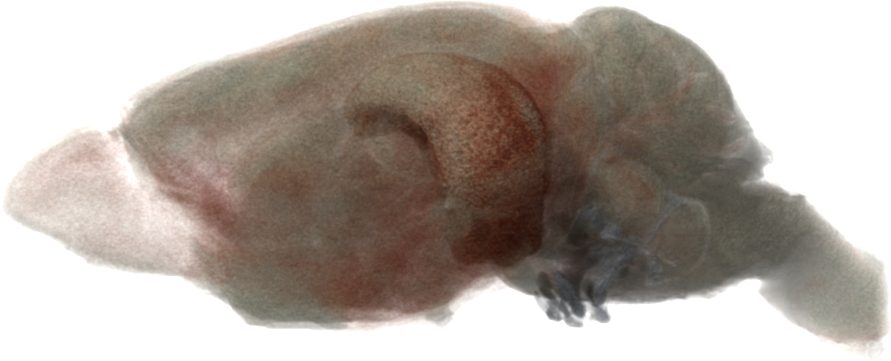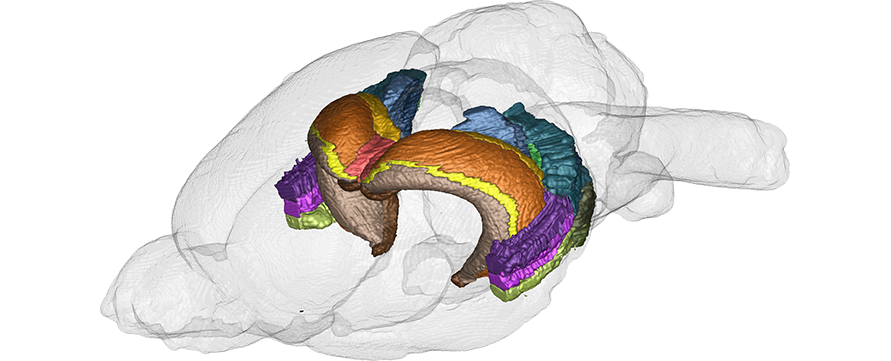Rat hippocampal formation
The rat hippocampal formation is a C-shaped structure that is situated in the caudal part of the brain. The cortex that forms the hippocampal formation has a three-layered appearance, typical of the so-called allocortex. A short description of these layers:
Stratum moleculare
On top, the most superficial layer is situated - this layer is referred to as the molecular layer (stratum moleculare) in the DG and the Sub. In the CA-region, the molecular layer is subdivided into a number of sub-layers. In the CA3, three sub-layers are distinguished: The stratum lucidum, representing the input from the DG, stratum radiatum, i.e the apical dendrites of the neurons in stratum pyramidale and most superficially, the stratum lacunosum-moleculare comprising the apical tufts of the apical dendrites. The lamination in the CA2 and the CA1 is similar with the exception that the stratum lucidum is missing (see Figure 1 in our NRN Review).
Principal cell layer
Below the molecular layer and superficial to a deep, polymorph layer is the cell layer, which is composed of principal cells and interneurons.
Deep layer
A deep layer, comprising a mixture of afferent and efferent fibers and interneurons.

Lateral volume rendered view of the mouse brain with the hippocampus exposed underneath the cortical mantle.

Dorsolateral glass-brain view of the rat brain with the hippocampus (brown, yellow and orange) and parahippocampus highlighted.
Subdivisions
Which subdivisions are considered part of the hippocampal formation and which are part of the parahippocampal region is still a matter of debate. An extensive overview of the criteria for subdividing the hippocampal formation and parahippocampal region is provided at www.rbwb.org (Kjonigsen et al, 2011)). The 2 criteria that we used here to include structures into the definition of the hippocampal formation are:
- Laminar organization: the hippocampal cortical sheet has a three-layered appearance that is characteristic of the allocortex.
- Connectivity: the connectivity between the structures in the hippocampal formation is largely unidirectional, which is extremely atypical for corticocortical connections.
On this website, the subdivisions that we consider part of the hippocampal formation are: the dentate gyrus, cornu ammonis ( subdivided further into CA1, CA2, CA3) and the subiculum.
The video below depicts the position of the hippocampal formation in the mouse brain which closely resembles its position in the rat brain. It was created by NM van Strien based on an MRI image and processed in Lightwave using the plugin Volumedic.